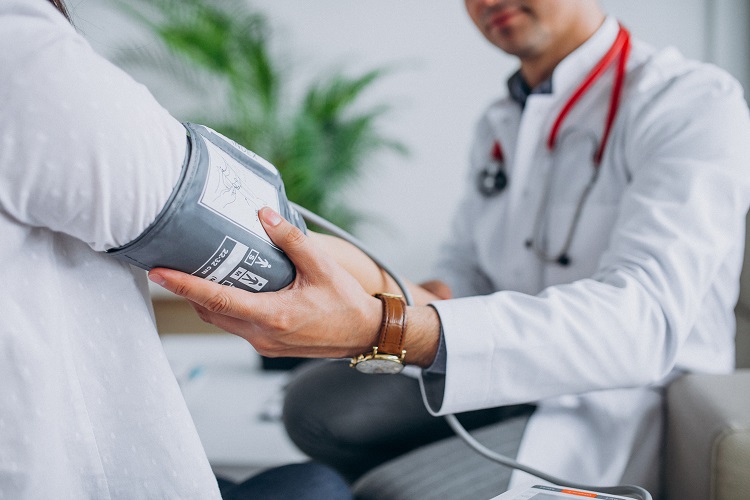
Tips To Lower High Blood Pressure
High blood pressure (hypertension) is a condition in which the force of the blood against the artery walls is high enough that it may eventually cause health problems, such as heart disease.
“According to the American Heart Association, “High blood pressure affects approximately one in three adults in the United States, or about 76.4 million people.”
You can experience high blood pressure for years without any symptoms. People suffering from high blood pressure are more prone to health issues, including heart attack, kidney disease and stroke.
Blood Pressure Levels
-
Normal
Systolic mmHg 90-119, and
Diastolic mmHg 60-79 -
Stage 1 Hypertension
Systolic mmHg 140-159, or
Diastolic mmHg 90-99 -
Stage 2 Hypertension
Systolic mmHg over 160, or
Diastolic mmHg over 100 -
Hypotension (Low Blood Pressure)
Systolic mmHg 90 or less, or
Diastolic mmHg 60 or less -
Prehypertension
Systolic mmHg 120-139, or
Diastolic mmHg 80-89
Tips to Lower High Blood Pressure
1. Maintain a Healthy Weight
Obesity increases the risk of developing high blood pressure. Losing even ten pounds can help lower your blood pressure. Try to maintain your weight to keep your blood pressure in control.
- Exercise regularly to reduce your weight. Make sure to exercise at least for 30 minutes in a day. It can be a brisk walk, yoga, gardening, and bicycling.
- Eat small portions of your meal. Avoid eating heavy meals at night. Make sure to eat 2 hours before going to bed.
2. Healthy Diet
Eat foods that contain low amount of saturated fats, total fat, and cholesterol. Eat more amount of fruits, vegetable, and low fat dairy products. Eat according To DASH plan. You can add whole grains, fish, poultry, nuts, red meat, and sweets and sugared beverages to your diet. These foods are high in potassium, calcium, and magnesium, as well as protein and fiber. The DASH eating plan increases your fiber intake, so you might initially experience bloating and diarrhea. Get used to the DASH way of eating and then gradually increase your daily servings of fruits, vegetables, and grains.
3. Limit Your Alcohol Intake
Drinking too much alcohol can raise blood pressure and can increase the risk of health issues such as liver, brain, and heart. Alcohol being high in calories, block your efforts to lose weight. So make sure to limit your alcohol intake.
Women can have one drink in a day and men can have two drinks.
Your healthcare provider might advise you to avoid alcohol, depending on your health condition and your medications.
4. Reduce Sodium Intake
A small reduction in sodium intake can lower your blood pressure by 2 to 8 mm Hg. The effect of sodium intake on blood pressure varies from person to person.
The recommended amount of sodium intake is less than 2,300 milligrams (mg) a day or less. However, a lower sodium intake is 1,500 mg a day or less for the people with greater salt sensitivity, including:
- African-Americans
- Anyone age 51 or older
- Anyone diagnosed with high blood pressure, diabetes or chronic kidney disease
Follow these tips to decrease sodium intake.
- Make sure to read food labels and choose low-sodium foods and beverages.
- Eat fewer processed foods.
- Use herbs or spices to add flavor to your food. Avoid adding salt as 1 teaspoon of salt has 2,300 mg of sodium.


